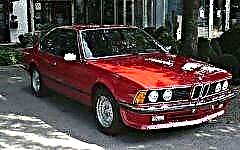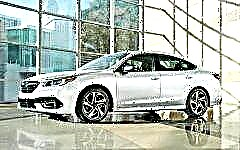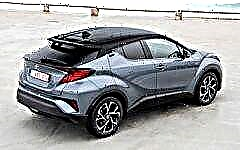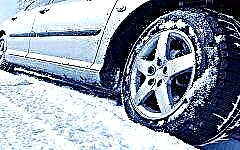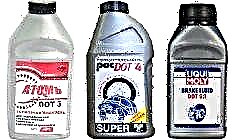 It often happens that you need to add brake fluid, however, no one knows which one to pour. In this article, we'll talk about whether it is possible to mix brake fluids.
It often happens that you need to add brake fluid, however, no one knows which one to pour. In this article, we'll talk about whether it is possible to mix brake fluids.

The content of the article:
- Types of liquids
- Composition of liquids
- Which can be mixed
Every driver is familiar with a situation requiring replacement or topping up of fluid in the brake system. If the braking system is in good working order and regular checks indicate that there are no brake fluid leaks, then periodically it is necessary to completely or partially replace it. The timing of replacement and the type of fluid are regulated by the plant that manufactured the vehicle.
However, if damage to the brake system occurred on the way, and many, many kilometers to the garage, where it is possible to provide a complete replacement, then the driver is faced with the task of adding fluid for the brake system to the reservoir to the desired level. It is good if the prudent motorist has the brake fluid used in the previous planned replacement in stock, but if there is none, then the driver is forced to add brake fluid from the store's assortment available nearby. Before purchasing fluid and filling the brake reservoir to the desired level, you should consider whether this brake fluid can be mixed with the one already in the brake system.
What are brake fluids

There are standards for the types of fluids used in vehicle braking systems. It:
- DOT-3. A clear to light brown oily fluid with a boiling point of at least 200 ° C for dry brake fluid and 140 ° C for wet brake fluid. It is used in vehicles where drum brakes are installed, for example, on trucks, which heat up when braking much less than disc brakes.
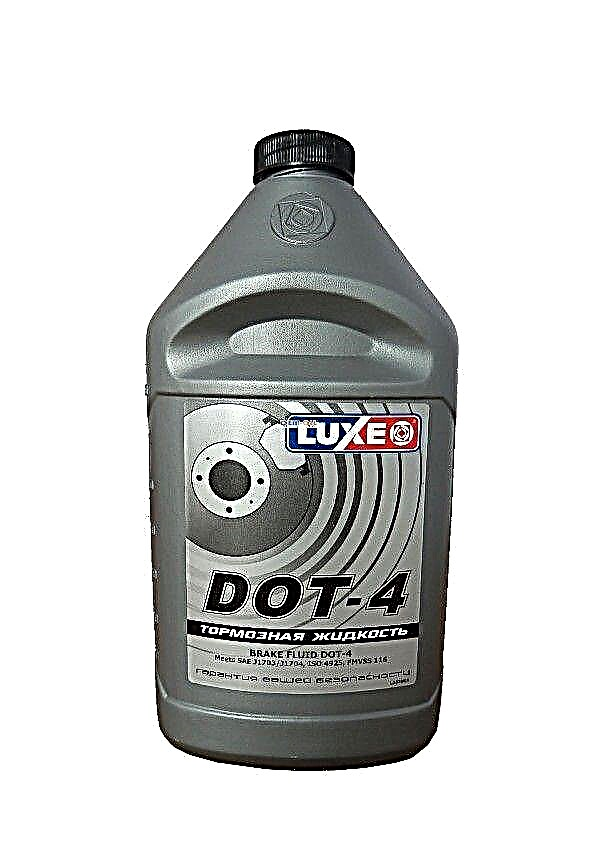
- DOT-4. Has a color from transparent to light brown. The boiling point starts at 230 ° C for dry and 155 ° C for wet brake fluid. Used in most modern motorcycles and cars.

- DOT-5. A fluid that has a dark red color and a boiling point above 260 ° C for dehydrated and 180 ° C for brake fluid with moisture. Suitable for motorcycles and sports cars, completely non-hygroscopic.
- DOT-5.1. Slightly oily fluid with a boiling point of 260 ° C for dry and 180 ° C for wet brake fluid. The color ranges from transparent to yellowish. Introduces an improved version of DOT-4. The temperature at which it boils is much higher.
Brake fluid composition
It combines all brake fluids, with the exception of DOT-5, their base component is polyethylene glycol. The base for creating DOT-5 is silicone. You should remember that the composition of DOT-5,1 is fundamentally different from the consonant DOT-5. If there is an urgent need, it is permissible to combine DOT-3, DOT-4 and DOT-5.1, since they have a common base. It is even better if they were released by the same manufacturer. At the same time, we must not forget that adding another DOT-3 liquid to the DOT-4 liquid, you thereby lower the boiling point of the first one. If you mix fluids made on different components, that is, silicone and polyethylene glycol, as a result of a reaction between them, a composition is formed that simply is not a brake fluid, which is extremely dangerous for further movement.
What brake fluids can be mixed
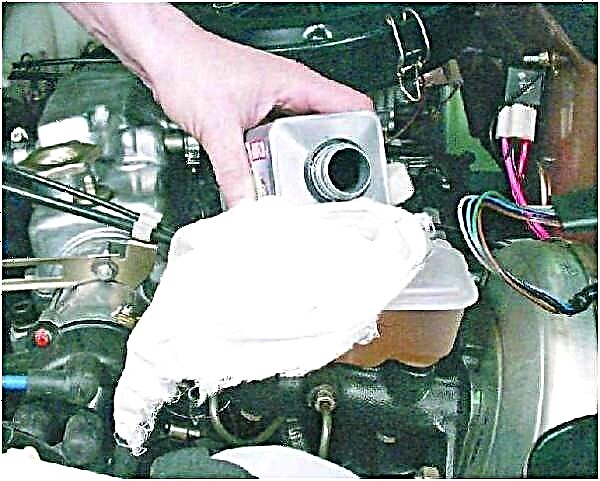
Based on the foregoing, it is worth remembering that in no case can:
- allow mixing of a composition such as DOT-5 with any of the above, they are completely incompatible;
- connect in the brake system of a car with ABS, fluids, one of which is intended for ABS, and the second is not;
- add a liquid such as DOT-3 to DOT-5.1: the resulting mixture will boil at a lower temperature;
- the same is threatened by mixing DOT-4 and DOT-3 - a decrease in the boiling point of the resulting mixture.
If absolutely necessary, it is allowed to add:
- DOT-4, when the system is filled with DOT-3;
- DOT-5,1 to the main DOT-3;
- DOT-5,1, when the working staff is DOT-4. The resulting mixture boils at a higher temperature than the original, which, in principle, is allowed.
It is not recommended to mix liquids under different brands. Each manufacturer does everything to give its product high quality, adding a variety of additives. It is difficult to predict how these fluids will behave when interacting. Whichever fluid combination you use, the first thing to do after suddenly adding brake fluid on the road and reaching your destination is to completely replace the entire mixture in the brake system. If you plan to replace DOT-4 with a newer DOT-5, you will need to flush the brake system in order to eliminate the remains of obsolete fluid.
Remember, it never hurts to carry around a supply of exactly the same brake fluid that is in your car in order to avoid situations where you have to take risks and mix different types of fluids.




